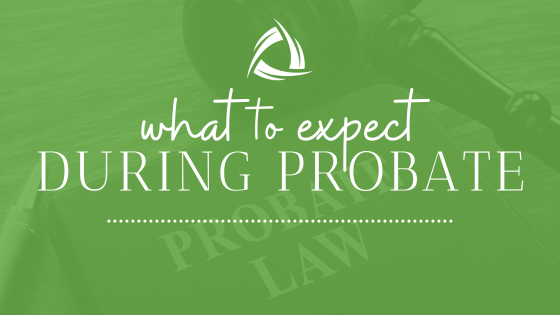Probates can look different for every family. It is likely to last a few months to as long as over a year, depending on the amount of assets and difficulties that arise within the last will and the beneficiaries. Probate will also last longer if the deceased did not have a last will, it got lost or destroyed, the last will is considered invalid, or the beneficiaries are also deceased. However, under usual circumstances, probate will follow the same list of steps and regulations, ensuring that the deceased wishes are upheld and the beneficiaries get what is written to them.
Whether you have an upcoming probate court date or want to ensure you make the probate process as easy as can be for your family, here is what to expect.
The Start of Probate
The first step of probate is starting probate altogether. The executor or close relative will file a petition to the court to begin the probate process. Additionally, this person will need to submit a death certificate, last will, any estate planning documents, and any other information that will be required in probate court.
Once the probate petition is approved by the court, they will determine who the executor of the estate is. In most cases, this will be the same executor that the deceased appointed to distribute the assets, but the court will reassess in case of possible issues in between. When chosen, this person allows the court access to the assets and information during the probate process.
The Authentication Stage
Within this beginning stage, the court will also need to look over the last will and testimony and authenticate it. This means they will review it to ensure it was created in compliance with the state’s laws. The format, language, and presence of witnesses can change from state to state. Authenticating the last will can also make appointing the executor easier. However, if there is no will to authenticate, the court will assign the next of kin as executor.
Sending Notices
The next step in the probate process is contacting everyone involved. This entails anyone listed as a beneficiary or as an heir in the estate plan. However, in the circumstance there is no last will, the executor can choose to contact any interested party within the family.
After contacting family and friends, the next step is to contact any service providers the deceased was involved with. This can be anyone from creditors to those with a financial interest in the deceased’s estate. Additionally, mortgage lenders, utility companies, and banks should be notified, and the next steps to either closing or transferring accounts should be planned.
Taking Inventory of the Assets
The most crucial step in any probate process is collecting and valuing the deceased’s assets. In the state of Missouri, you have 30 days to take inventory, value each asset, and then report it back to the court. This step aims to confirm the existence of these assets and ensure the beneficiaries are given what is written to them.
Executors will want to check bank accounts, all investments (even digital assets), and personal items laid out in the last will and estate planning. This step will also focus on settling any debts, bills, or taxes.
Distribution of Assets
After the debts have been settled and inventory has been taken, the executor will get permission from the court to start the process of distributing the remaining assets to the beneficiaries. When this is approved, the next step is to simply abide by the deceased’s wishes and hand out the assets as written in the last will.
When this is all completed, the last step is for the executor to petition the court to dissolve the estate and close the case. Once approved, the estate will become a public record. This officially ends the probate process.
The probate process can be long and difficult for some, but you don’t have to go through it alone. If you have questions or want to ensure everything is done soundly, contact the team at Hartmann Law.

